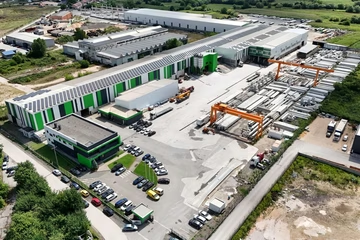Environment report warns of coal plant pollution in Western Balkans

The Western Balkans are heavily polluted by the coal-powered thermal plants across the region, the CEE Bankwatch Network said in its latest report.
Oglas
A press release said that in 2021, Western Balkan coal plants flagrantly breached air pollution legislation under the Energy Community Treaty for the fourth year in a row, emitting five times as much sulphur dioxide and 1.8 times as much dust as allowed.
“The entry into force of new legal standards on 1 January 2018 should have brought reductions in deadly air pollution. But the report – Comply or Close – shows that in 2021, dust emissions from coal plants included in the National Emissions Reduction Plans (NERPs) of Bosnia and Herzegovina, Kosovo, North Macedonia and Serbia increased compared to previous years, while sulphur dioxide emissions only decreased slightly,” the report said.
The Ugljevik coal plant in Bosnia and Herzegovina emitted the most sulphur dioxide in the region in 2021 – 86 774 tonnes – despite having desulphurisation equipment installed at a cost of EUR 85 million. The highest dust polluter in 2021 was Gacko in Bosnia and Herzegovina, whose emissions more than tripled to 4 960 tonnes in 2021 – more than 16 times as much as allowed by the country’s NERP. The Pljevlja coal plant in Montenegro also breached the Energy Community Treaty in 2021 by operating for more than 20 000 hours from 1 January 2018 without undertaking pollution control investments.
The Federation of Bosnia and Herzegovina approved an illegal lifetime extension for the Tuzla 4 and Kakanj 5 units and North Macedonia to started up an ancient oil-fired plant again after being in reserve for years to deal with the energy crisis, the report said.
CEE Bankwatch Network brings together environmental and human rights groups in central and eastern Europe.
Kakvo je tvoje mišljenje o ovome?
Učestvuj u diskusiji ili pročitaj komentare
Oglas
Kakvo je tvoje mišljenje o ovome?
Učestvuj u diskusiji ili pročitaj komentare
Oglas
NAJČITANIJE
Oglas
Oglas
Najnovije
Oglas
Oglas





 Srbija
Srbija
 Hrvatska
Hrvatska
 Slovenija
Slovenija



























































